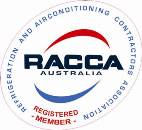Global Warming & HCFC Refrigerants:
Global Warming, together with Ozone Layer Depletion have been two of the top ten global environmental concerns since 1970s. Traditional refrigerants, using Hydrochlorofluorocarbons (HCFCs) as the major refrigerant to transport heat between the interior and exterior units of an air conditioner, was reported to be depleting the ozone layer and an agreement was made to phase out the production in developed countries under the Montreal Protocol.
HFCs & Low GWP Refrigerants:
Currently the major refrigerant is switching to Hydrofluorocarbons (HFCs) which has zero Ozone-Depletion Potential (zero-ODP). Even though HFCs have a zero-ODP, in some cases it has a Global Warming Potential (high-GWP). How to lower the index of ODP and GWP at the same time is a new subject to the refrigeration and air conditioning industry for future consideration.
Due to the high-GWP of HFCs, some countries have decided to phase out it and switch to Ammonia, Hydrocarbons (HCs), Hydro-Fluoro-Olefin (HFO) or Carbon Dioxide (CO2) refrigerants, which are considered to have a promising future with zero-ODP and low-GWP. HFCs have also been proposed to phase out in Australia, with the Turnbull Federal Government announcing in June 2016 that a phasedown of HFCs imports would come into effect from January 2018.
October 2016–MOP 28 meeting:
The 28th Meeting to the Parties of the Montreal Protocol (MOP 28) was held from October 10-14 in Kigali, Rwanda. During MOP 28, a historic agreement was reached to reduce HFC emissions. The Kigali Amendment to the Montreal Protocol was an agreement to reduce HFC emissions by 85 percent, by establishing three different timetables for all developed and developing countries to freeze and reduce and their HFC production and use. Developed countries agreed to make their first HFC reductions from 2019, with developing countries to follow from 2024.
The Amendment is the most significant change to the Montreal Protocol since 1990 and follows several previous meetings where discussions were held on an HFC phase down agreement, within the last two years. These meetings included, but were not limited to: MOP 26, MOP 27, OEWG 38, and a New York meeting where a Declaration to secure an HFC amendment was established.
The discussions at MOP 26 in November 2014 were mixed due the resistance of some countries to move forward, while countries who were previously resistant became open to having discussions on how to move forward with an HFC phase down agreement. MOP 27, which was held in November 2015, proved to be much more of a success with an agreement made by the Parties to work towards a HFC phase down amendment by the end of 2016. The success of MOP 27 was developed further at the 38th Meeting of the Open-Ended Working Group (OEWG 38) in July 2016, where progress was made on several HFC phase down challenges such as funding, freeze dates and reduction schedules. The New York meeting, held in September 2016, lead to the establishment of the New York Declaration of the Coalition to Secure an Ambitious HFC Amendment, which called for adopting an ambitious HFC phase down agreement at MOP 28.
The Kigali Amendment:
The Kigali Amendment is an amendment to the Montreal Protocol and outlines a schedule for developed and developing countries to reduce their HFC production and use. Developed countries will have to start reducing their HFC production and use from 2019, with developing countries to follow from 2024. The developing countries are split into two groups, with the second group (which includes India, Pakistan, Iran, Iraq and the Gulf States) to reduce their HFC production from 2028 and use from 2032. The Kigali Amendment is legally binding for all 197 Parties to the Montreal Protocol.
Overall the international reception to the Kigali Amendment has been positive, with Australia being one of the first 10 countries to ratify the Amendment. In November 2017, the 20-party ratification threshold was surpassed meaning that the Kigali Amendment will officially come into force in 2019.
Australian HFC phasedown legislation:
In June 2016, the Federal Government announced that it would deliver an 85 percent phasedown of HFCs.
Then-Environment Minister, Greg Hunt, stated that the phasedown will contribute an estimated 80 million tonnes to Australia’s 2030 emissions reduction targets. He also stated that Australia’s HFC phasedown supports the proposed global phasedown under the Montreal Protocol.
A year later, the Federal Government passed legislation in Parliament to phasedown HFCs.
The phasedown of HFC imports under the Ozone Protection and Synthetic Greenhouse Gas Management Amendment Bill 2017, will commence from January 2018 and reach an 85 percent reduction by 2036.
RACCA’s response to environmental concerns of High GWP Refrigerants:
In response to environmental concerns raised by the use of high Global Warming Potential (GWP) refrigerants, RACCA has endeavoured to support the launch and application of low alternative refrigerants in recent years. A thorough discussion and survey have been taken and several options were addressed on whether it is possible to allow some near zero-ODP low-GWP refrigerants to be used more.
RACCA Australia will devote all its effort on the environmental sustainability and low-impact refrigerants.
RACCA Australia’s Low GWP Refrigerant coverage:
-R32 refrigerant to become more prevalent in air conditioning
-Japan announces new HFO-based air conditioning refrigerant
-European F-Gas Agreement to be introduced in 2015
-Refrigerant business choices of the future
-HVAC/R Energy Efficiency Seminar Series on next month
-HVAC/R Energy Efficiency Seminar on next month
-AREA updates Low GWP Refrigerant Guide
-Honeywell starts production on HFO-1234ze
-Refrigeration 2015 Conference calls for abstracts
-Refrigeration 2015 Conference program released
-Refrigeration 2015 Conference Underway
-Ozone Options Review Paper submissions made public
-CCN’s Industry Agenda for 2016
-FEATURE: Government announces details of HFC Phasedown
-Consumer Goods Forum announces new refrigeration resolution
-HVAC&R Nation publish article on HFC phasedown
-Future:Gas roadshow to navigate low-GWP refrigerant transition
-FEATURE: Panel of industry experts confirmed for future:gas
-Future:Gas roadshow continues in QLD
-Emerson launches refrigerant calculator
-IIR publish another refrigeration quiz
-ARC’s Green Scheme Accreditation Program
-FEATURE: ARC launches new Green Scheme app
-Electrotechnology IRC proposes new RAC qualifications
-Refrigeration 2018 Conference call for abstracts
-Successful talks at MOP28 result in global HFC phase down agreement
-International reaction to Kigali Amendment
-FEATURE: Government takes action on HFCs under Montreal Protocol
-FEATURE: HFC phasedown amendments pass in Parliament
-FEATURE: Australia ratifies Kigali Amendment
-Kigali Amendment to come into force
-HFC phasedown and OEWG 38 Vienna Meeting
-AIRAH’s phase down webinar series available online
-Agreement on a major step forward to reduce HFC emissions
-Mixed responses on HFCs at Montreal Protocol Meeting
-Outcomes of OPSGGM Programme review revealed
-International Institute of Refrigeration’s HFC online resources



